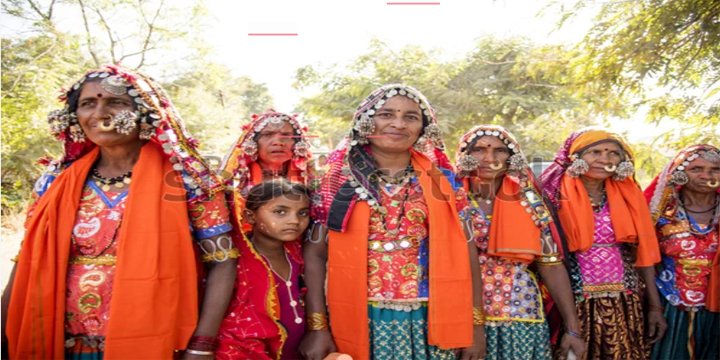BANJARA COMMUNITY
- On 28 February, 2025, Lok Sabha Speaker Shri Om Birla said that The Banjara community, who are always at the forefront of preserving forests, need to be mainstreamed in the development journey of the country,
- He also said that the time has come when their voices would be heard and challenges would be addressed.
ABOUT BANJARA COMMUNITY
- The Banjara community is a diverse group spread across India, with significant populations in Telangana, Andhra Pradesh, and Karnataka.
- Historically, the Banjara were nomadic, but most have now settled in villages called Tandas.
Language
- The Banjara community speaks Gor Boli or Lambadi, an Indo-Aryan language.
- Lambadi does not have a written script.
Religion
- The majority of Banjaras are Hindu.
- Some practice a blend of Hinduism and animistic beliefs.
Culture
- Festivals:
- The Banjara community celebrates the Teej festival in Shravan (August), where unmarried girls pray for a good husband.
- Dance:
- Fire dance and Chari are traditional dances of the Banjara community.
- Tattoos:
- Tattoos are a common cultural practice, often reflecting personal style, family identity, and social connections.
SIGNIFICANCE OF BANJARA COMMUNITY
- The Banjara community has a longstanding tradition of living in harmony with nature and conserving forests.
- In their migratory practices, they have helped maintain ecological balance, contributing significantly to forest conservation and wildlife protection.
- The Sustainable Development Goals (SDGs), particularly those relating to climate action (SDG 13), life on land (SDG 15), and decent work and economic growth (SDG 8), align with the Banjara community’s traditional role in ecological conservation and sustainability.
MAINSTREAMING THE BANJARA COMMUNITY
- Integration in National Development:
- The Banjara community needs to be mainstreamed in the country’s development agenda, including social, economic, and political spheres.
- Addressing their challenges in terms of education, healthcare, and economic opportunities is crucial for ensuring equitable growth.
- Contributions to Development:
- Despite facing marginalization, the Banjara community contributes significantly to various sectors like agriculture, business, and labor.
- They have shown resilience and dedication to national progress through hard work and entrepreneurship.
- Youth Empowerment:
- Education and skills training are essential for empowering the younger generation of the Banjara community.
- As per India’s National Policy on Education, promoting education for marginalized groups, especially for girls, is critical for inclusive development.
POLICY IMPLICATIONS
- Government Initiatives: The address by Shri Om Birla aligns with the Government of India’s commitment to empowering marginalized communities, as reflected in various schemes such as:
- Pradhan Mantri Jan Dhan Yojana (financial inclusion),
- Skill India Mission (vocational training),
- Beti Bachao Beti Padhao (education and empowerment of girls),
- National Scheduled Tribes Finance and Development Corporation (NSTFDC) (financial assistance to tribals).
- Inclusive Growth: Ensuring the Banjara community is integrated into the mainstream development process is vital for inclusive growth as per India’s 15th Finance Commission recommendations on strengthening marginalized groups.
FUTURE DIRECTIONS
- Education and Skill Development: Promoting quality education and vocational skills in the Banjara community is crucial for human capital development, which directly contributes to economic growth.
- Social Inclusion: Policy frameworks should ensure that the Banjara community is given access to social welfare schemes, healthcare services, and legal rights.
- Environmental Conservation: Given their traditional knowledge of forests and nature, the Banjara community can be included in environmental protection programs and eco-tourism initiatives.
Note: Connect with Vajirao & Reddy Institute to keep yourself updated with latest UPSC Current Affairs in English.
Note: We upload Current Affairs Except Sunday.


